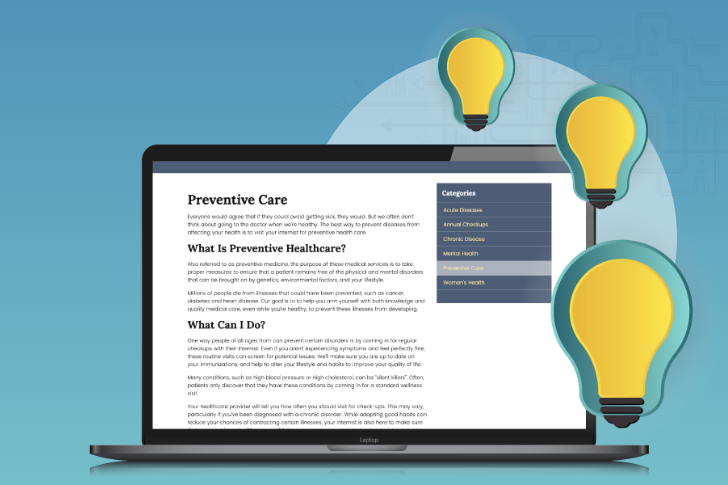4 Signs Your Website Has Met Its Expiration Date
Some things last forever, but websites aren’t one of them. True, your website will never grow mold or start turning green. But it does have a shelf life. Thanks to the continual advances of technology, the way your patients use the internet is always changing. And if your website is too outdated, it can cause more harm to your practice than good.
So how do you know if your site is past its expiration date? It can be hard to tell at a glance. Think of an aging website like the carton of eggs in your fridge that’s 3 weeks past its sell-by date. They look okay. They might be okay – but is it worth taking the risk? Thankfully, there are easy tests for eggs and websites alike. Here are 4 easy website freshness tests.
1. The “Thumbs Test”
Thanks to smartphones and tablets, more than half of all internet traffic takes place on a mobile device. So more often than not, patients will navigate to your site using their thumbs instead of a keyboard and mouse. Is it set up to accommodate those needs? Access it from a smartphone or tablet. Is it hard to navigate? Do you have to re-size, zoom, and pinch your way through for it to be readable? Are the buttons too small to be located and pressed easily? Will your patients need their reading glasses in order to see it? If you answered yes to any of these questions, it’s time to upgrade to a responsive design.
2. The “Under 25 Test”
This one is easy. Ask someone under the age of 25 what they think of your website (they’ll probably do it from their phone). Will they be impressed, or will they turn up their nose? This might seem like a shallow way to judge the value of your site. But at the end of the day, your website is your practice’s first impression. Does it make you appear modern, or behind the curve? What visitors assume of your website, they may assume about your practice as a whole.
3. The “Google Test”
You should be on the first page of Google. That’s easier said than done, but it’s the #1 way for new patients to find you online. Check to see where you rank, but don’t just type your practice’s name. Instead, use search terms that someone new to your area would – someone who has no idea your practice exists. Try using terms like “dentist near me,” or “dentist open tomorrow.” If you rank on the first page for these terms, you’re golden. If not, it’s time to consider an SEO program.
4. The “Facebook Test”
41% of people say social media affects their choice of a specific doctor. That’s because people often post asking their friends if they know any good doctors or dentists in the area. If your practice isn’t on Facebook, then you’re missing out on chances for additional referrals. And since Facebook is the biggest social network, that should be where you focus first. Ask a friend if they can find your practice’s business page on Facebook. If they can’t, it’s time for an update.
If you pass these tests, great! You don’t need to do anything for a while. Be sure to run the tests at least twice a year. Regardless of where you rank, be sure your website is something you can be proud of – something you want associated with your name. The first impression is often the most powerful.
For more information on building a powerful practice website that brings patients to your door, contact us today.



